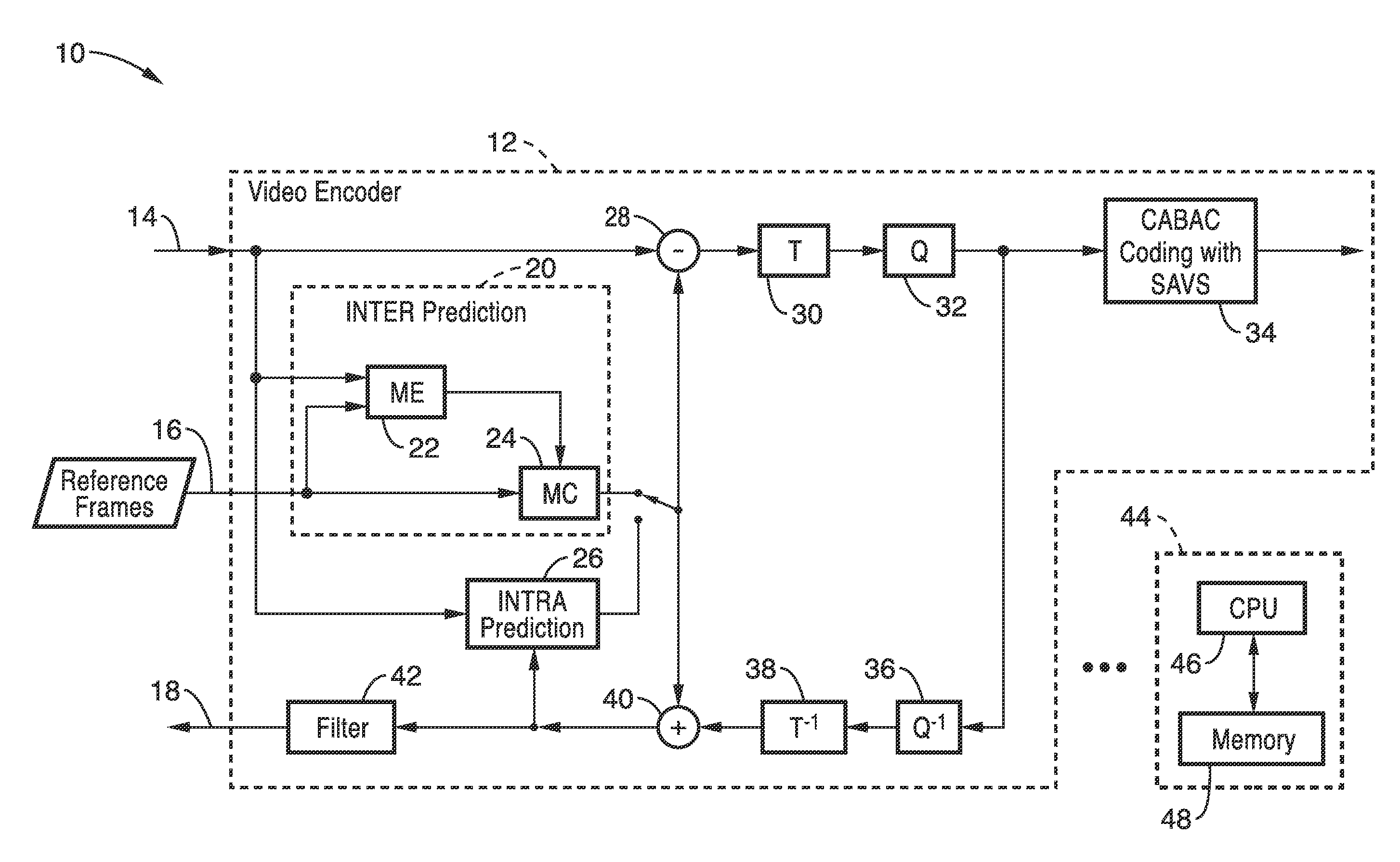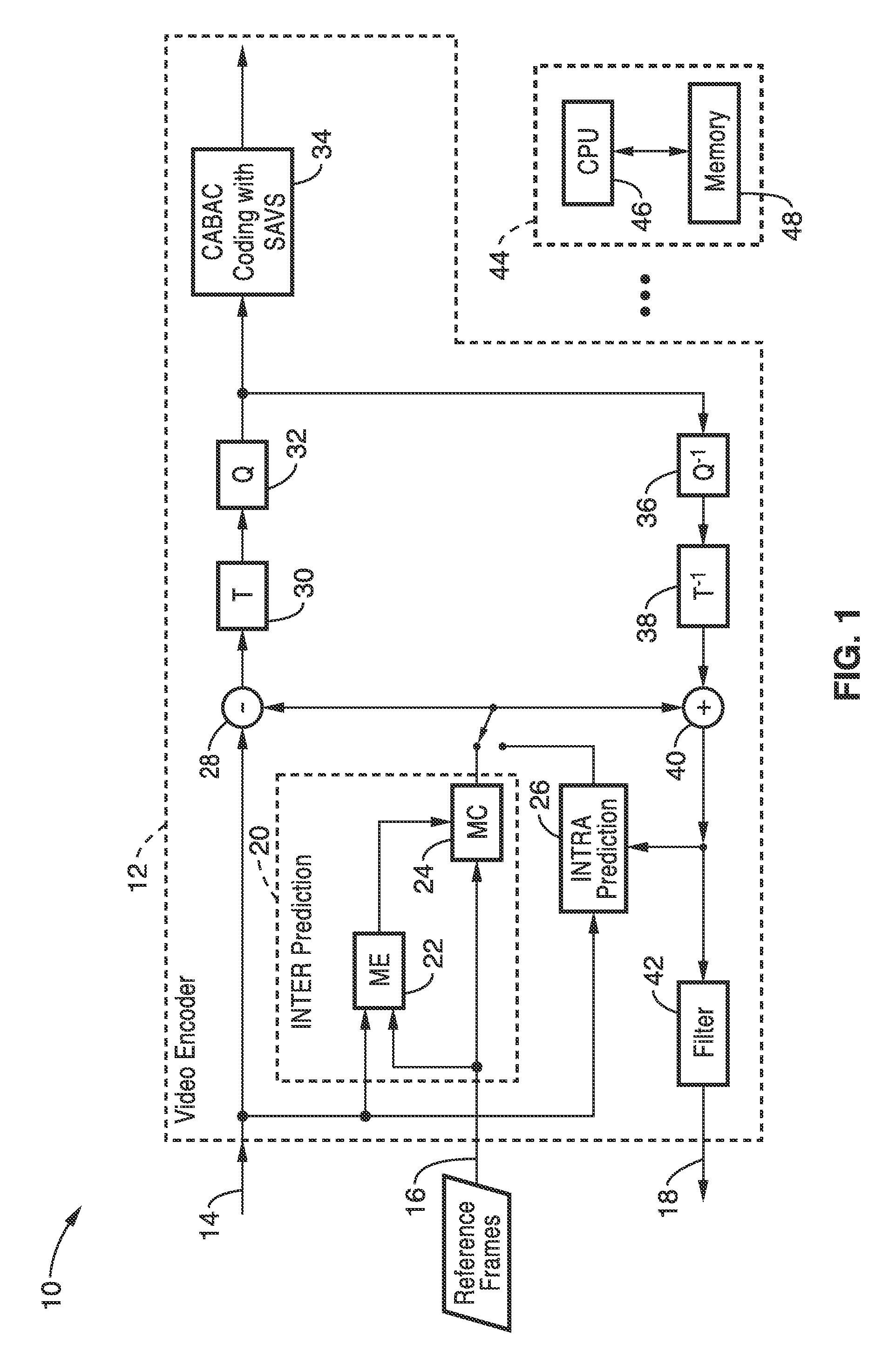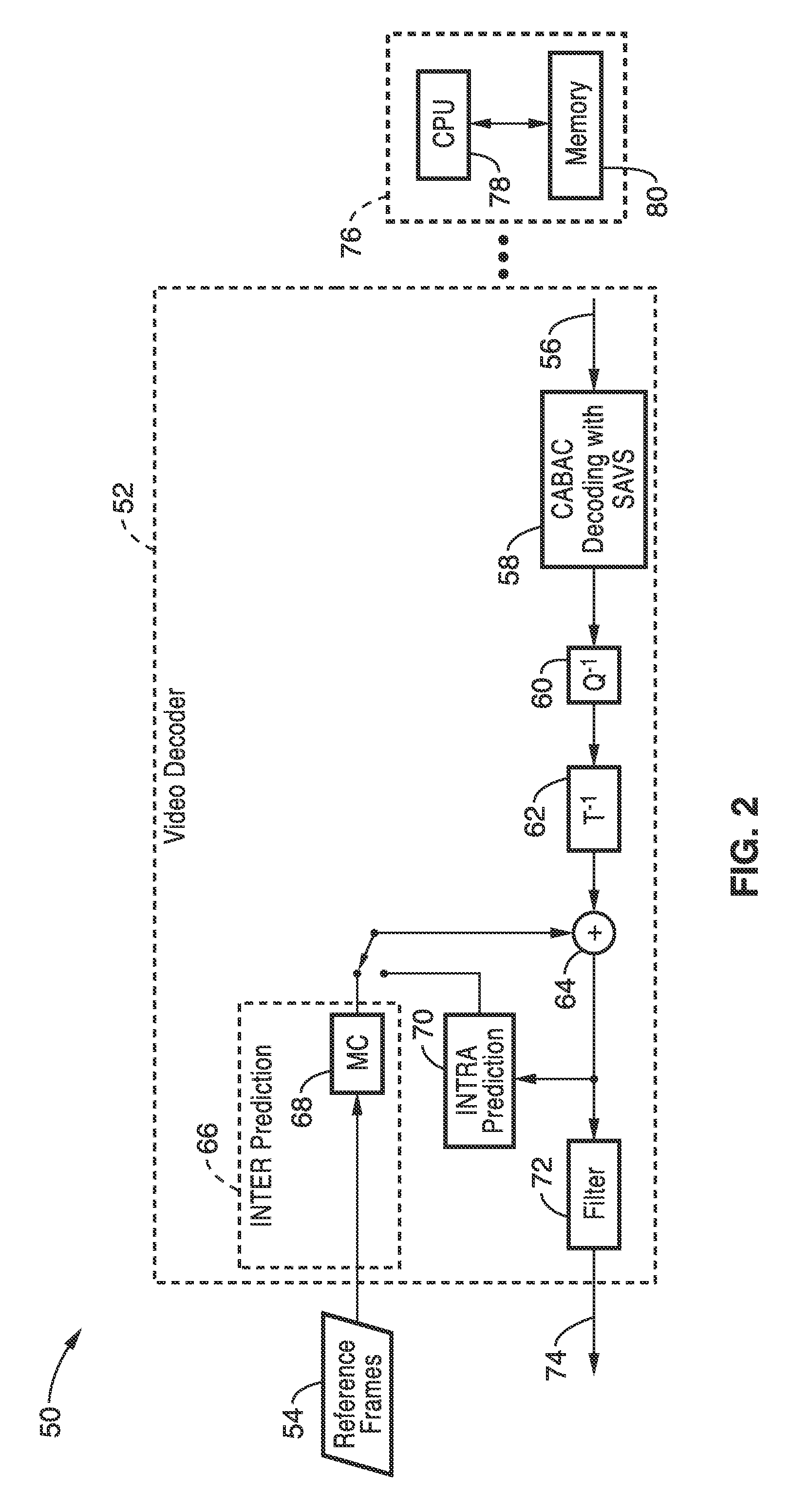Binarization of dqp using separate absolute value and sign (SAVS) in cabac
a binary arithmetic and absolute value technology, applied in the field of video coding, can solve the problem that the single qp value of one lcu is insufficient for obtaining high levels of subjective quality
- Summary
- Abstract
- Description
- Claims
- Application Information
AI Technical Summary
Benefits of technology
Problems solved by technology
Method used
Image
Examples
embodiment 1
[0038]2. The apparatus of embodiment 1, wherein said programming is alternatively configured for execution on said computer for coding of the sign for dQP prior to coding of the absolute value of dQP.
[0039]3. The apparatus of embodiment 1: wherein said video coding apparatus utilizes a Coding Unit (CU) structure in which block sizes are not fixed, and in which the Largest Coding Unit (LCU) is separated into multiple CU each having its own QP which can differ from one CU to another; and wherein Delta-QP (dQP) signals the difference between QP of the current CU and predicted QP is encoded in the syntax.
[0040]4. The apparatus of embodiment 1, wherein said video coding is performed according to the High Efficiency Video Coding (HEVC) standard.
embodiment 4
[0041]5. The apparatus of embodiment 4, wherein said video coding is performed in a high efficiency coding mode within the High Efficiency Video Coding (HEVC) standard.
[0042]6. The apparatus of embodiment 1, wherein said apparatus comprises a coder / decoder (CODEC).
[0043]7. The apparatus of embodiment 1, wherein said programming is configured for execution on said computer for coding a flag bit indicating that dQP is non-zero, prior to the coding of the non-zero dQP and its sign.
[0044]8. The apparatus of embodiment 1, wherein said binarization benefits from the value of dQP having similar probability of being positive or negative for a given absolute value.
[0045]9. A method of performing video coding, comprising: performing inter-prediction and / or intra-prediction for reducing temporal and / or spatial redundancies; performing a transform and quantization during encoding and / or inverse transform and inverse quantization during decoding; performing context-based adaptive binary arithmet...
embodiment 9
[0047]11. The method as recited in wherein said video coding method utilizes a Coding Unit (CU) structure in which block sizes are not fixed, and in which the Largest Coding Unit (LCU) is separated into CUs each having its own QP which can differ from one CU to another; and wherein Delta-QP (dQP) signals the difference between QP of the current CU and predicted QP is encoded in the syntax.
[0048]12. The method as recited in embodiment 9, wherein said video coding is performed according to the High Efficiency Video Coding (HEVC) standard.
PUM
 Login to View More
Login to View More Abstract
Description
Claims
Application Information
 Login to View More
Login to View More - R&D
- Intellectual Property
- Life Sciences
- Materials
- Tech Scout
- Unparalleled Data Quality
- Higher Quality Content
- 60% Fewer Hallucinations
Browse by: Latest US Patents, China's latest patents, Technical Efficacy Thesaurus, Application Domain, Technology Topic, Popular Technical Reports.
© 2025 PatSnap. All rights reserved.Legal|Privacy policy|Modern Slavery Act Transparency Statement|Sitemap|About US| Contact US: help@patsnap.com



